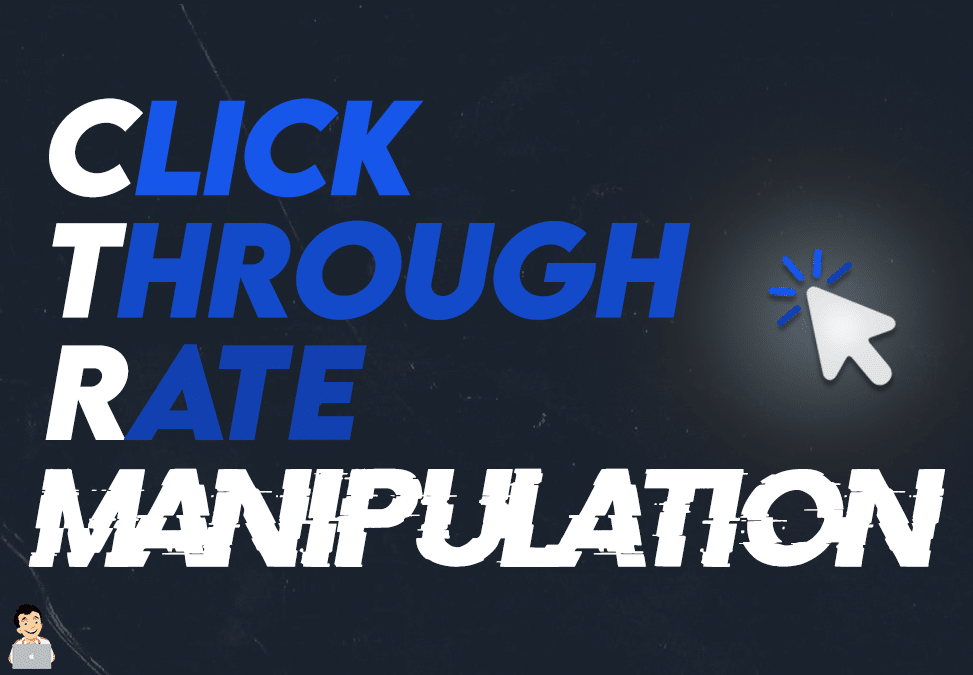Accelerate Your Search Engine Optimization Development Via CTR Adjustment
The relevance of click-through price (CTR) in the world of SEO can not be overstated, as it serves as an important indicator of individual involvement and web content efficiency. By understanding and controling CTR via critical enhancements-- such as maximizing title tags and crafting influential meta summaries-- marketers can promote enhanced presence and organic growth.
Comprehending Click-Through Price
Click-through rate (CTR) is a vital statistics in electronic marketing, representing the percentage of customers who click a details web link contrasted to the complete number of individuals who check out a web page, e-mail, or advertisement. This metric offers as an important sign of exactly how successfully material engages its target market. A higher CTR recommends that the material reverberates with individuals, enticing them to take activity, while a reduced CTR might indicate an absence of significance or passion.
Comprehending CTR includes recognizing its parts and the aspects that influence it (CTR Manipulation). Numerous components, such as engaging headlines, appropriate key phrases, and calculated call-to-action placements, play a substantial role in boosting CTR. In addition, the context in which the link is provided-- whether in an online search engine outcome, an e-mail project, or social media-- can affect customer engagement levels
Keeping an eye on CTR over time permits online marketers to analyze the effectiveness of various approaches and make notified decisions to enhance their campaigns. By assessing patterns and patterns in CTR data, companies can improve their material strategies, target certain audience segments, and eventually boost their electronic marketing efficiency. Therefore, a detailed understanding of CTR is basic for driving effective advertising initiatives.
Significance of CTR in SEO
The relevance of click-through rate (CTR) extends beyond individual involvement; it is likewise an essential element of search engine optimization (SEARCH ENGINE OPTIMIZATION) CTR offers as an indication of how well a web site's material reverberates with its target market. A greater CTR suggests that the website is supplying pertinent and compelling details, which can bring about improved natural rankings.
Browse engines, particularly Google, very closely keep an eye on CTR as part of their algorithms. A web page with a high CTR signals to online search engine that the web content is beneficial and credible, possibly improving its placement in search results page. Conversely, low CTRs may suggest that users do not locate the material attractive, resulting in reduced rankings.
Furthermore, CTR can influence the total user experience, as it reflects the performance of meta titles and descriptions in attracting clicks - CTR Manipulation. This correlation in between user actions and internet search engine efficiency highlights the significance of optimizing both web content and presentation to improve CTR
Techniques for CTR Enhancement
Improving click-through rates (CTR) calls for a strategic strategy that encompasses numerous strategies targeted at enhancing visibility and appeal in search results. One effective approach is optimizing title tags and meta summaries. Crafting compelling, keyword-rich titles and summaries can attract individuals' focus, making them most likely to click on your web link.

Additionally, think about A/B screening various headings and descriptions to identify which variants reverberate ideal with your target market (CTR Manipulation). This data-driven technique enables continuous optimization based on user preferences
Including numbers, questions, or psychological triggers in your titles can likewise dramatically enhance CTR. For example, titles that position fascinating questions commonly oblige customers to click to locate solutions.
Lastly, making sure mobile-friendliness is crucial, as a boosting variety of customers access the internet via smart phones. A receptive layout enhances individual experience, resulting in greater engagement prices. By applying these methods, you can properly boost your CTR, inevitably adding to your overall search engine optimization success.
Analyzing Customer Actions
Recognizing customer behavior is essential for maximizing click-through prices and improving overall search engine optimization performance. By evaluating how customers communicate with search engine result, brands can obtain valuable insights into what drives involvement. Key metrics such as time invested in page, bounce rates, and navigating patterns illuminate customers' choices and discomfort factors, permitting targeted renovations.
To efficiently examine customer behavior, it is necessary to make use of tools like heatmaps and session recordings. These tools reveal where users click most frequently and just how they navigate through web content. Furthermore, customer surveys and comments systems can offer qualitative data that additionally illuminates choices and motivations.
Division of individual demographics additionally plays an essential function in recognizing habits. By categorizing customers based upon aspects this post such as age, area, and rate of interests, marketing professionals can customize content and headlines to meet specific audience needs. This targeted technique not only improves individual satisfaction yet likewise boosts the likelihood of clicks.
Inevitably, a detailed analysis of user behavior equips marketing experts click with the understanding required to craft compelling titles and descriptions, inevitably driving higher click-through rates and enhancing search engine optimization approaches. Engaging users from the onset lays the groundwork for sustained traffic and boosted internet search engine presence.
Measuring CTR Success
Gauging click-through price (CTR) success is essential for reviewing the performance of search engine optimization approaches. CTR offers as a vital efficiency indicator, showing how well your content reverberates with customers and encourages them to involve with your site. To accurately assess CTR success, it is crucial to track metrics in time, contrasting modifications prior to and after applying particular search engine optimization strategies.
Begin by making use of analytics devices, such as Google Analytics or Look Console, to gather data on organic search performance. Focus on recognizing the CTR for private key phrases, pages, or projects to determine areas for enhancement. A high CTR suggests that your title tags and meta descriptions are engaging, while a reduced CTR may recommend the requirement for refinement.
Furthermore, take into consideration segmenting information by tool kind, place, and target market demographics to obtain deeper understandings into individual habits. This granularity permits targeted changes that can improve CTR. Consistently assessing and maximizing your approach based on these understandings not only improves CTR but likewise adds to overall website presence and position. Ultimately, a comprehensive method to determining CTR success equips marketers to make data-driven choices that cultivate sustained SEO growth.
Conclusion
